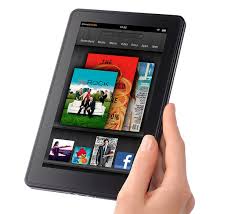
Hand-held eReaders
The term hand-held eReaders refers to electronic readers of ebooks and digital newspapers and magazines. A computer can read ebooks, so any smaller, hand-held form of computer would fit the description of hand-held eReaders: WAP-enabled mobile phones, tablet PC’s, palm readers et cetera. However, there are also dedicated hand-held eReaders like the Kindle and dozens of others.
In fact, hand-held eReaders have been around for nearly forty years, although the devices in those days were mostly for the American military and more resembled a modern laptop. Their development grew out of the need of the US military to make hardware maintenance manuals available on electronic book readers in the field.
Hand-held eReaders have really taken off over the last few years, mainly because of Amazon’s decision to provide a digitized library of books on its web site. Amazon was not the first to provide a digital book library by any means, the Gutenberg Project started in about 1970 and Google started a similar project in about 2005.
However, Amazon’s spark of genius was to manufacture and distribute its own pocket, hand-held eReaders which it called the Kindle. They are currently on the third version which can store 3,500 books in its internal memory. It has touch computer screen technology and rechargeable internal batteries.
The latest version, Kindle Voyager, is light-weight, easy to read and has wireless connectivity so that you can download PDF or other compatibly formatted books from any on line store wherever there is wireless coverage. One version of the Kindle has free Wi-Fi for a one-off, up front payment of about $50.
The standard kindle hand-held eReaders are just over six inches wide and are ideal for reading novels like paperbacks and hardbacks, but there is also the Kindle DX at nine inches which is recommended for larger publications like newspapers and magazines, which can also be easily downloaded via the Wi-Fi connection.
This is a fantastic feature because it allows you to keep reading your favourite local and national newspapers even when you are travelling on the other side of the world. The Internet connection also allows you to email and receive emails from friends as easily as if you were at your desktop computer at home.
The best thing about modern hand-held eReaders is that they give me access to tens of thousands of free books which had gone out of copyright, which normally means before 1920. There are fascinating books prior to that date and many facts that they hold are still relevant.
However, I travel a lot and usually read four to six books a month, which adds weight to my luggage and sometimes that is not enough so I am stuck out in the sticks with nothing to read for weeks. Hand-held book readers mean that that never has to happen again.
Now, when I am in town drinking a coffee, I will use the Wi-Fi to scan libraries for interesting-looking free titles. I download dozens of them. Then, before I do on holiday, I pay for and download my dozen books.
If I run out of paid-for books, I fall back on my free, old books and they are a delight, especially the ones on Victorian cooking and fishing techniques.
by +Owen Jones
